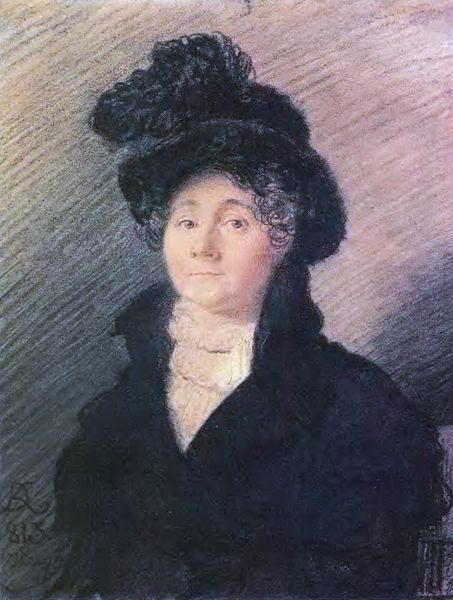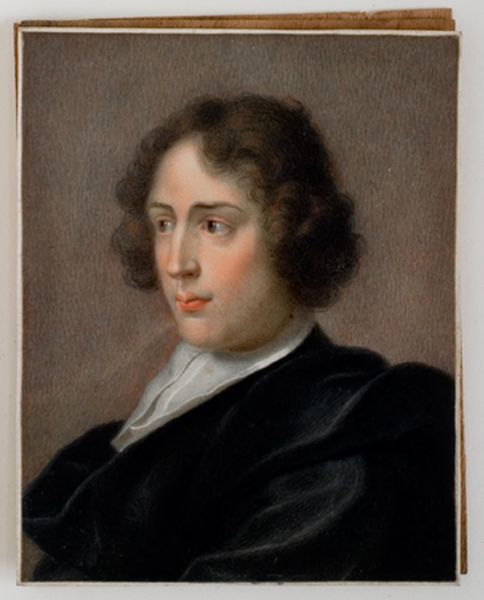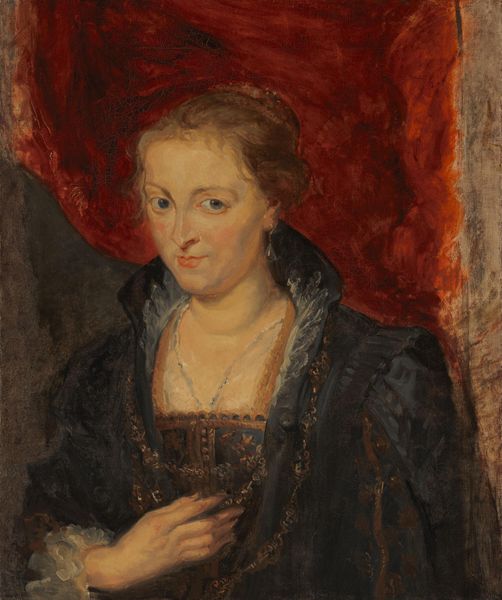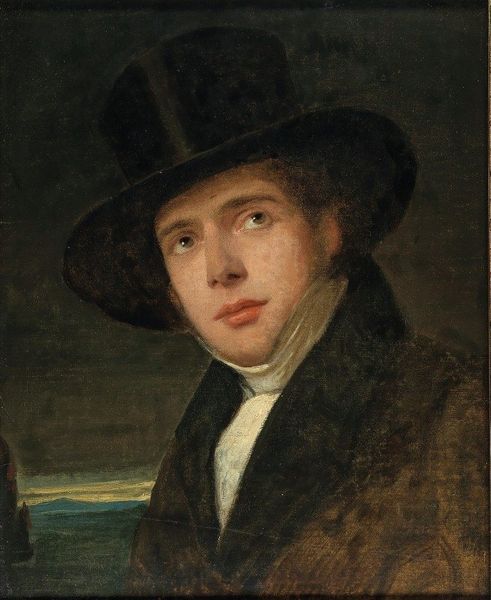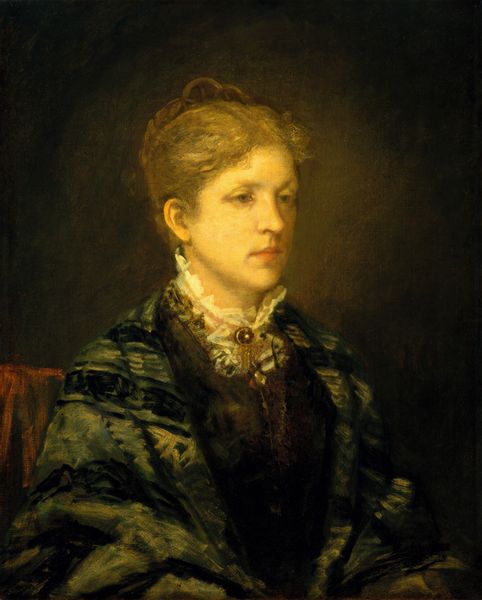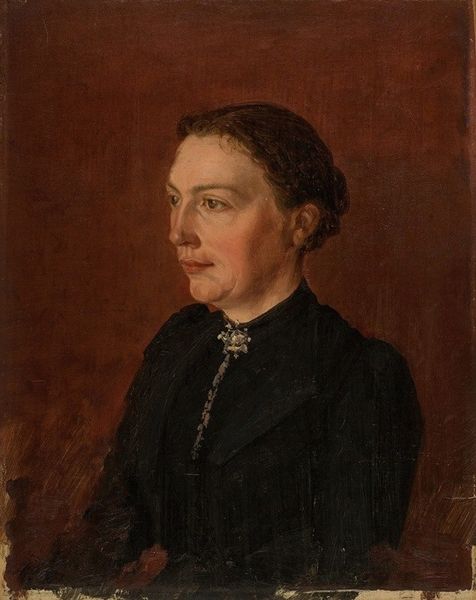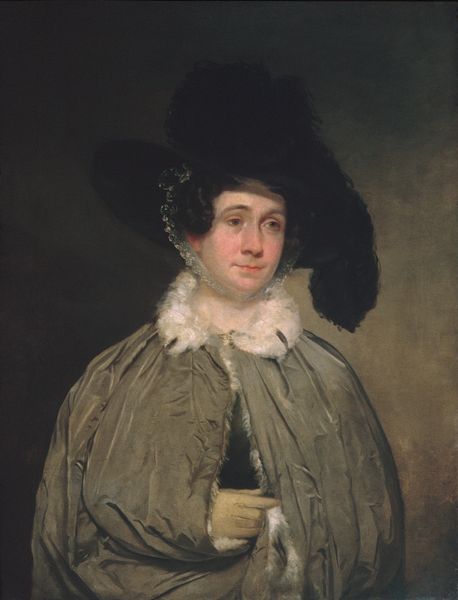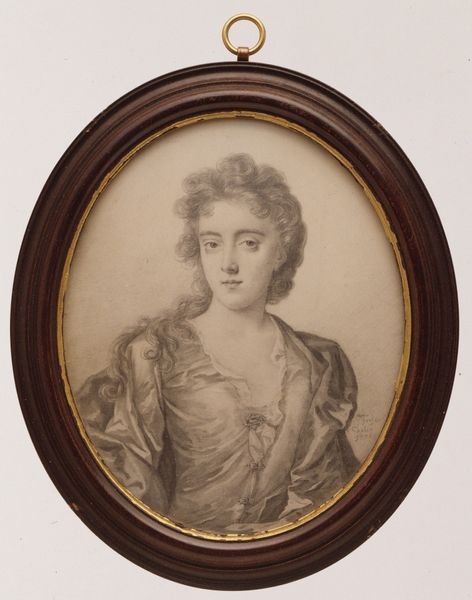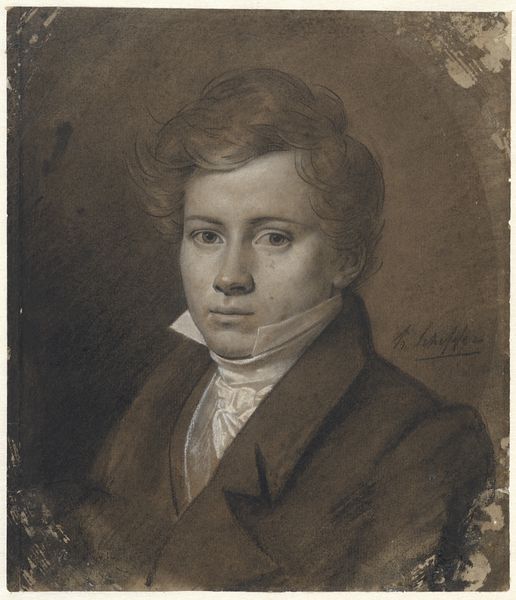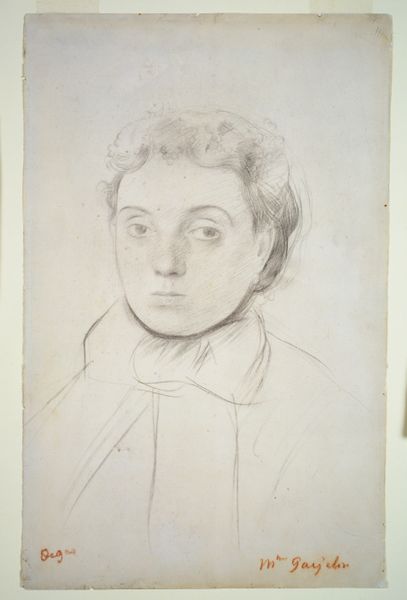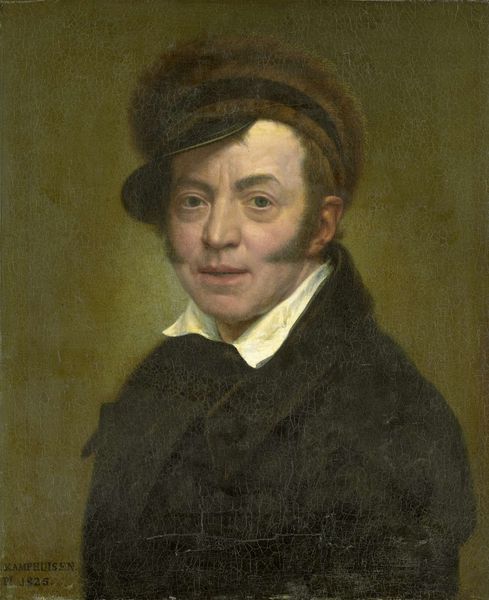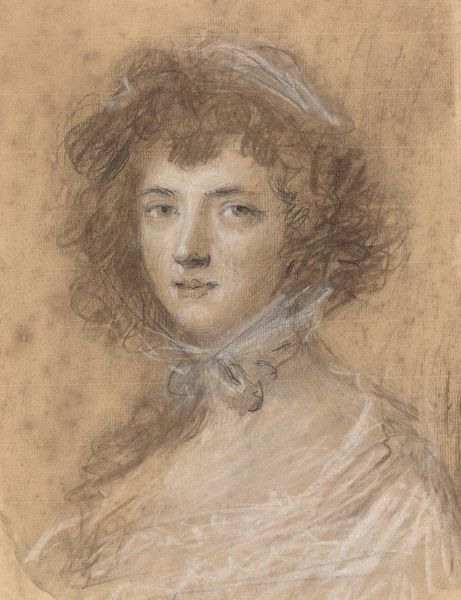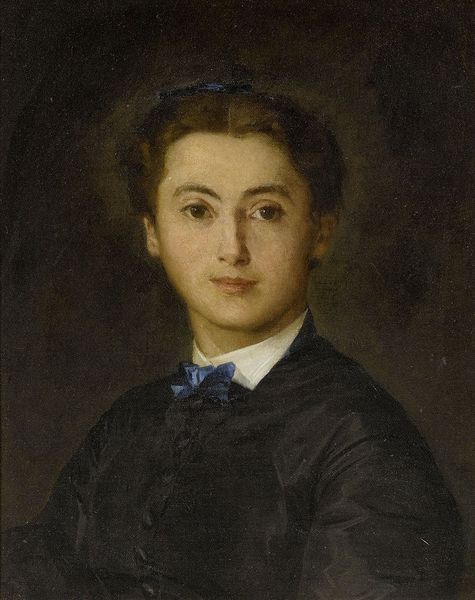
Copyright: Public domain
Curator: Here we have Thomas Eakins' "Portrait of Miss Mary Perkins," an oil painting completed in 1902. Editor: The overall feeling is quite somber, isn't it? The muted tones and the subject's rather serious expression create a melancholic mood. There’s something very grounded about it, despite the evident brushwork. Curator: Eakins, known for his commitment to realism, meticulously studied human anatomy and motion. This piece seems to blend that precision with looser brushstrokes, doesn't it? It’s intriguing to consider the role of formal portraiture and the evolving notions of women at the turn of the century. The way her dress is made implies it being produced at large scale in a factory, but maybe the laces where tailor-made in small manufacturies, allowing the survival of female workers. Editor: Absolutely, it raises questions about societal expectations and individual agency. We have this fashionable attire, yet Miss Perkins possesses a quiet intensity, seemingly resisting a passive, decorative role. The brushstrokes themselves feel very intentional, contributing to a powerful character study. What would be your take of the labor that went into painting it? I can also envision this painting hung in a very lavish interior. Curator: Thinking of the art production as physical work is a lens for reading the context around the subject depicted. A canvas requires stretching and priming with meticulous hand labor and time. We could study his work in relation to that, like when considering his teaching and engagement with photography. These are very hands-on processes too. Editor: Placing it within that historical context definitely enriches our understanding. It speaks volumes about the artist’s practice, his place within a certain societal strata. Curator: Considering the production chains makes it easier to understand the work's impact as the production and availability of supplies evolve at an accelerated pace during this time. These advancements enabled the flourishing and diversification of practices. Editor: And that affects the very idea of individual portraiture. How are you defining yourself with those standardized mass-production codes when portrayed as a unique human? The woman emanates agency and presence even with these tools in place. It allows us to engage critically with notions of identity and representation. I walk away appreciating that silent strength, and questioning those constructs of identity at that historical moment. Curator: Seeing it within this wider social, historical and artistic framework opens up so many pathways for discussion and further study of Eakins and of these specific cultural dynamics.
Comments
No comments
Be the first to comment and join the conversation on the ultimate creative platform.
